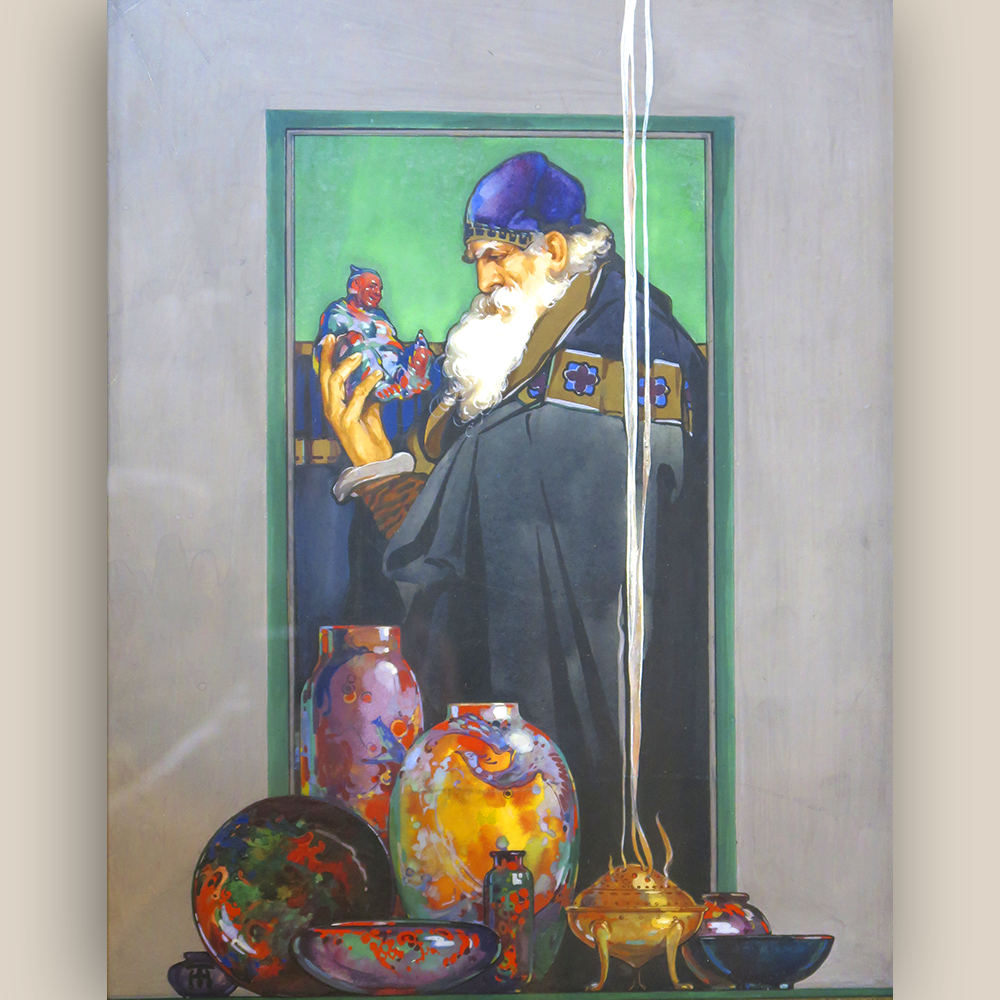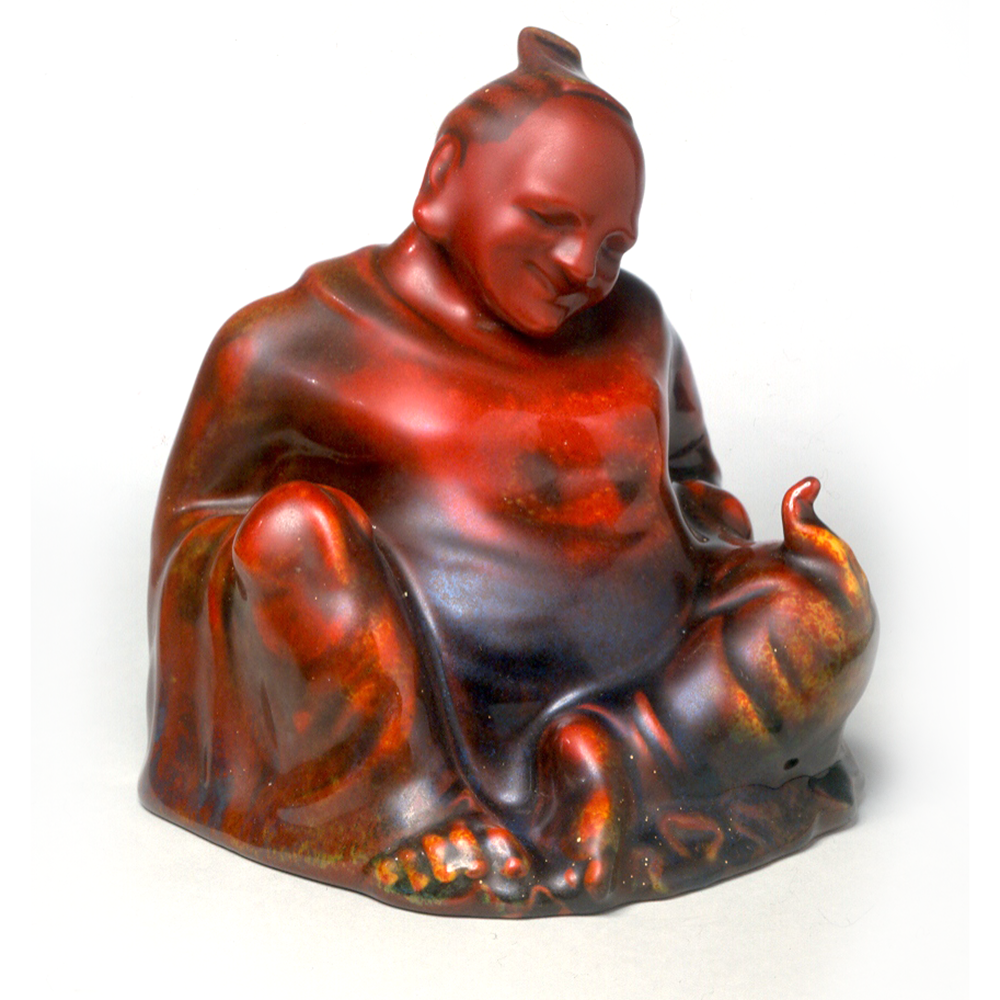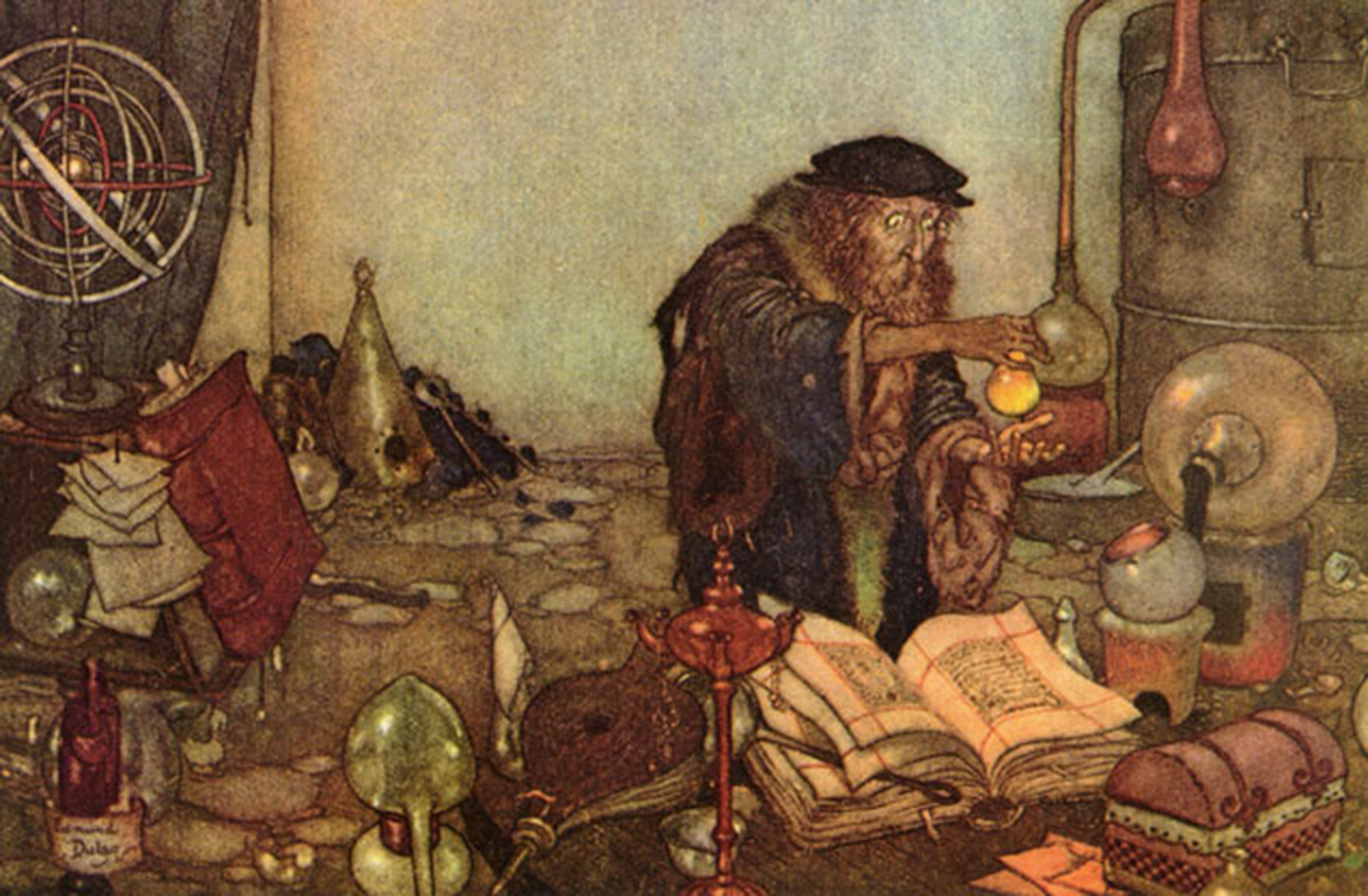
Chinese translucent porcelain, which became known in Europe in medieval times, was referred to as white gold, valued as equal to the most noble metal. The composition and method of manufacture remained a mystery in Europe until 1708 when the German alchemist, Johann Bottger, discovered the secret of hard-paste porcelain.
Bottger’s original Magnum Opus was to discover the Philosopher’s Stone, the elixir of life, and turn base metals into gold. Alchemists used the four classical elements of earth, fire air, and water, plus the concept of anima mundi (the soul) and creation stories, as analogies for their process. Bottger’s successful harnessing of the elements to make porcelain ensured his immortality as the creator of “white gold”.
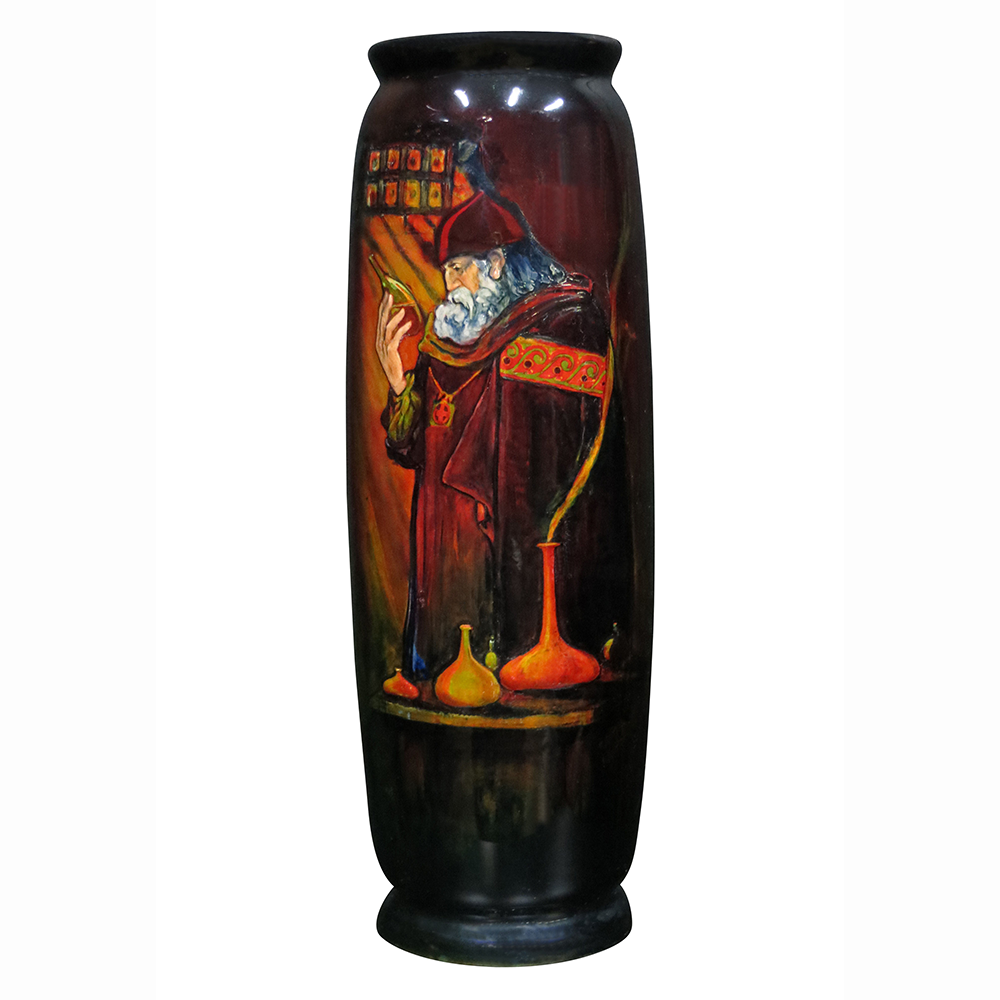
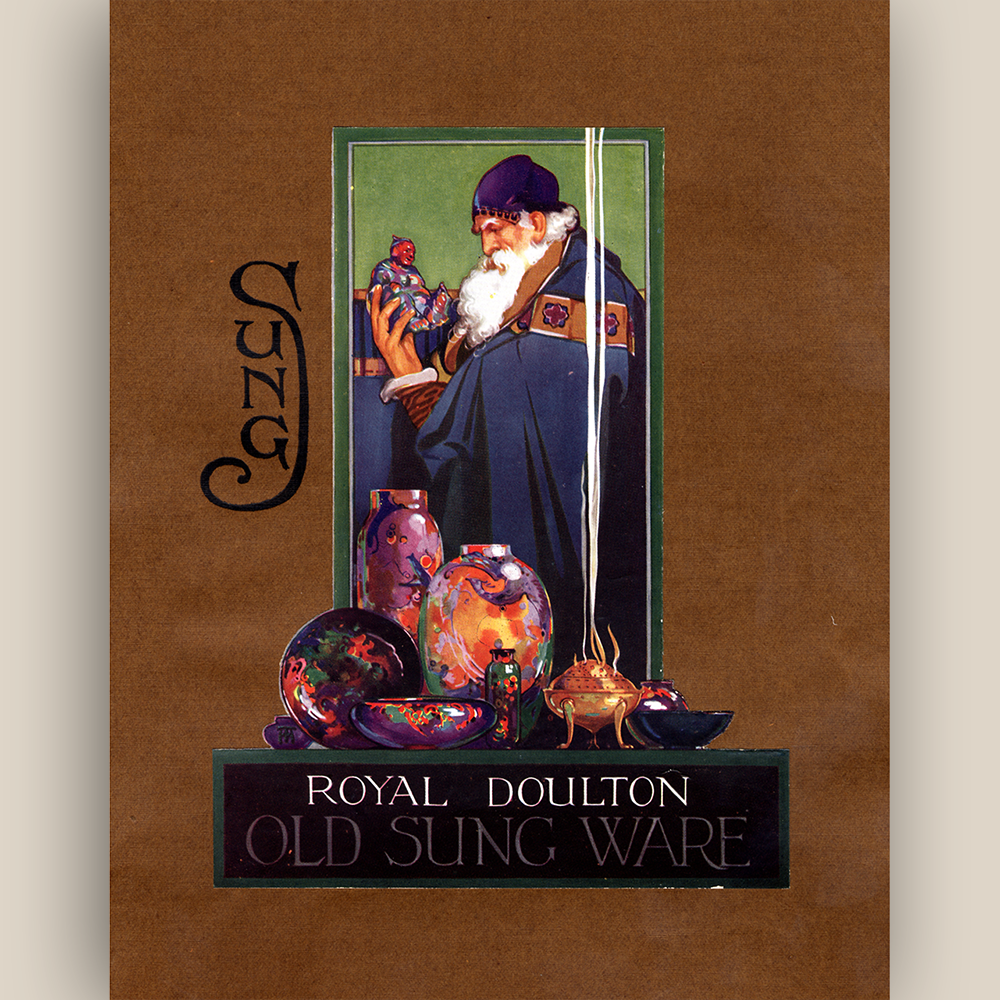
In the 8th century, the Persian alchemist Jabir Ibn Hayyan, acclaimed as the “father of chemistry”, discovered that aqua regia, a mixture of nitric and hydrochloric acids, could dissolve gold. His theory that rearranging the qualities of one metal would result in a different metal fueled the imagination of alchemists who aspired to transform base metals into gold for the next millennium. Originally, alchemy was considered a reputable science, and alchemists were revered as legitimate medical practitioners. However, by the 18th century, a rigid distinction was drawn between alchemy and chemistry and alchemists were often viewed as quacks and charlatans.
Royal Doulton’s Art Director, Charles Noke, likened his experiments with metallic oxides and reduction glazes to those of a medieval alchemist and used this image to promote his Sung and Chang wares during the 1920s. The fabulous effects of rouge flambé glazes are achieved by carefully controlling the elements of fire and air in the kiln to create a reducing atmosphere and the metallic oxides in the glaze are transformed into a lustrous red sheen.
Come and see the fascinating links between porcelain, alchemy, natural history and the classical elements in the upcoming exhibition Biophilia ǀ Christopher Marley.
